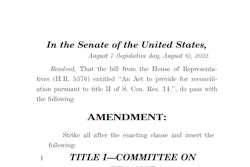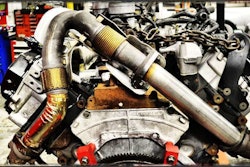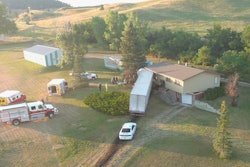Trucking news and briefs for Tuesday, Aug. 16, 2022:
FMCSA releases updated Medical Examiner’s Handbook draft, seven years after withdrawal
The Federal Motor Carrier Safety Administration on Tuesday published a notice of proposed regulatory guidance that includes an updated Medical Examiner’s Handbook (MEH) with proposed changes, seven years after the agency withdrew the existing handbook due to obsolete information.
Since 2015, medical examiners have been making truck drivers’ physical qualification determinations on a case-by-case basis based on the basic driver physical qualification standards in the federal regulations (49 CFR 491.41 through 491.49).
FMCSA says the goal of the updated MEH “is to provide information about regulatory requirements and guidance for MEs to consider when making physical qualification determinations in conjunction with established best medical practices.”
To assist in the development of the new handbook, FMCSA tasked its Medical Review Board with reviewing and providing recommendations for streamlining the handbook, including removing non-regulatory directive language and updating and removing obsolete information. Overdrive reported on those meetings in 2021, following the prior year's re-emerging confusion about the sleep apnea condition and just what is required of medical examiners when it comes to screening and potential treatment of the condition for CDL holders.

The current draft of the proposed MEH is included in the docket of the latest federal notice and can be seen here.
[Related: Evidence emerges of stricter approach -- and confusion -- around sleep apnea screening]
The agency with the current proposed draft seems to have responded to its advisory Medical Review Board's consternation over the lack of hard-fast screening guidance around the sleep apnea condition. As said longtime board member Brian Morris, during 2021 debate over the draft handbook during the MRB meeting reported here, "it seems almost criminal it’s not in here." He referred specifically to the lack of any mention of MRB and Motor Carrier Safety Advisory Committee-drafted, stricter screening protocols recommended in 2016, which close analysis by Overdrive at the time suggested would refer between 25% and 38% of all CDL holders for apnea testing and some level of conditional mediCal certification.
The current posted draft, unlike the one being considered in 2021, includes a link directly to those strict screening recommendations, but with this language, leaving the choice to consider those recommendations up to the medical professional: "For additional guidance on certification of drivers with moderate-to-severe [obstructive sleep apnea], one source MEs could consider is the November 21, 2016, OSA advisory recommendations."
FMCSA is accepting public comments on the notice and draft handbook for 45 days through Sept. 30. Those comments can be made here. Specifically, FMCSA asks that respondents direct comments to the draft handbook. “To the extent possible, comments should identify the page number and section number of the MEH to which the comments apply,” FMCSA said.
NOTE: FMCSA has extended the comment period for this notice through Oct. 31.
[Related: Specific sleep apnea screening criteria cut in last medical examiner draft handbook]
NHTSA chief leaving post for CARB position
California Air Resources Board Chair Liane Randolph announced last week that CARB is appointing Dr. Steven Cliff as CARB’s new Executive Officer, replacing CARB’s previous Executive Officer, Richard Corey, who retired at the end of June. Cliff currently serves as administrator of the National Highway Traffic Safety Administration (NHTSA).
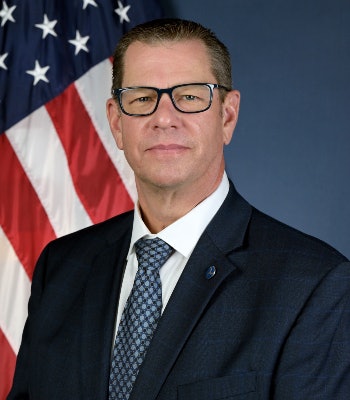 Dr. Steven Cliff
Dr. Steven Cliff
Cliff, whose professional training was in atmospheric chemistry, has extensive experience at the highest levels of state and federal government agencies. He served for four years as CARB’s Deputy Executive Officer overseeing mobile sources prior to joining NHTSA.
“Steve brings a deep understanding of the science of air pollution, along with a strong commitment and track record of promoting the solutions that deliver clean air benefits for all Californians, especially those living in communities impacted by persistent pollution,” said CARB Chair Liane Randolph. “He is the right choice to implement the Board’s vision during this crucial decade as we move ahead with the ambitious policies and programs to tackle the state’s climate emergency and continue to prioritize equity both within CARB’s workforce and in the communities we serve.”
Cliff’s first day at CARB will be Sept. 12.
[Related: Admission of emissions anxiety: A look at roadside smoke testing, now and into the future]
Paccar to offer Cummins X15N nat-gas engine
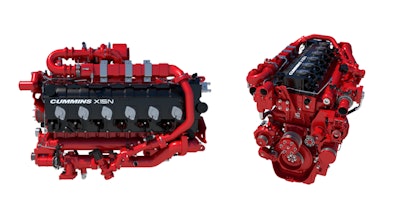 Paccar is making the Cummins X15N natural gas engine available in Kenworth and Peterbilt trucks.
Paccar is making the Cummins X15N natural gas engine available in Kenworth and Peterbilt trucks.
The X15N is the first natural gas engine to be specifically designed for heavy-duty truck applications with up to 500 horsepower output. The engine will include the integration of the Cummins Clean Fuel Technologies fuel delivery system.
“Paccar can help customers achieve their business goals by offering sustainable, affordable power solutions that use proven engine technology and existing infrastructure,” said John Rich, Paccar chief technology officer.
Paccar, Cummins and several customers including FedEx Freight and Knight-Swift plan to demonstrate the technology's ability to achieve lower carbon emissions for long-haul transport using internal combustion engine technology.
Said Srikanth Padmanabhan, vice president and president for Cummins Engine Business, “Importantly for the customer, the X15N will reduce the cost of adopting low-emissions technologies for their fleet, and gives them the confidence to do so, built on the strong foundation of more than 30 years of experience with natural gas.”
When operating on renewable natural gas, also known as RNG or biomethane, the X15N engine will be able to achieve major reductions in the lifecycle greenhouse gas emissions of Peterbilt and Kenworth trucks. This can range from a 90% reduction to carbon neutral, or even carbon negative, depending on the bio-source and waste feedstock used to produce the fuel.
The new X15N is capable of lower NOx levels than the 2024 EPA and CARB standards. It also features 1,850 lb.-ft. of peak torque output, which will provide optimum performance when paired with Eaton Cummins Automated Transmission Technologies HD and XD Transmission.
[Related: How politics and PR cloud 'zero-emissions' reality]
Drivewyze adds weather alerts to Safety+ platform
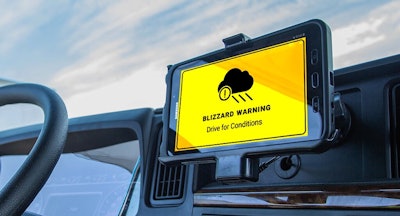 Drivewyze has added Severe Weather Alerts to its Drivewyze+ platform that will proactively alert drivers of impending bad weather.
Drivewyze has added Severe Weather Alerts to its Drivewyze+ platform that will proactively alert drivers of impending bad weather.
Drivewyze has integrated its technology with trusted weather data partners to pinpoint extreme or severe weather occurrences in the U.S., giving drivers time to slow down, alter routes, or pull over in severe-weather cases.
Its "Severe Weather Alerts" function to start at up to 50 miles from the severe weather occurrence. Alerts are only delivered when and where drivers need them and are discontinued when the weather threat passes. Safety+ is an always-on service and does not require 3rd party navigation services to be running.
“Providing early warning for extreme and severe weather helps protect truck drivers and others on our roadways,” said Brian Heath, CEO of Drivewyze. “The latest FMCSA data showed that weather was a factor in 20% of truck crashes that resulted in death, and 12% that resulted in injuries. It also created 13% of property damage. It’s very clear that early warning can help prevent accidents involving trucks -- we now have a tool that can deliver specific weather alerts to vehicles based on location and bearing.”
According to Heath, the alerts help drivers prepare for inclement weather, as well as high-risk weather events.
Since Drivewyze Safety+ is running in the background on supported ELD devices, the alerts are always on. Currently, the Severe Weather Alerts feature is rolling out to all compatible ELD devices.
In-cab alerts with messages like “Snow Squall Warning, Drive for Conditions” are displayed on the ELD. “Weather can turn on a dime and we work with partners to utilize real-time, high-quality data that impacts real driving conditions,” said Heath. “Our platform allows us to take that critical information and immediately pass it along to drivers.”
Severe Weather Alerts is one of several proactive alerts on the Drivewyze Safety+ platform. It also provides drivers with alerts for high rollover areas, low bridges, mountain corridors (steep grades/runaway ramps), real-time congestion, speed (areas known for high citations), cargo theft (high alert areas), and rest areas (parking availability).



